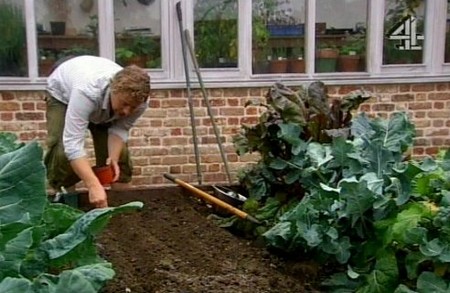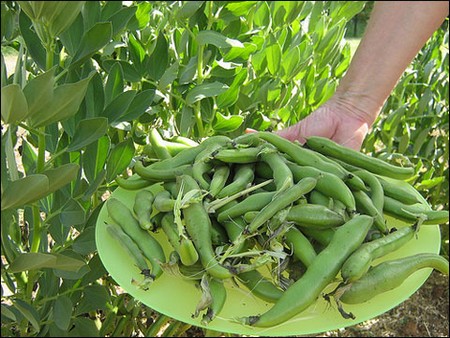It can be difficult to buy good-quality fresh broad beans in the shops. But this needn’t worry the vegetable gardener, as broad beans are easy to grow and, unlike runner beans, they are hardy, so there is the option of sowing in either autumn or spring. The dwarf varieties are free-standing so they can be grown in gaps in beds and borders where the blue-green foliage and white flowers are an attractive feature early in the season.
Broad beans grow early in the year, so they need an open, sunny site with shelter from strong winds. As their roots fix nitrogen from the air, they are a useful part of a crop rotation and can be followed by a greedy feeder such as one of the cabbage family.
Calendar
February-March
Make the first outdoor sowing in March, as soon as the soil is workable. You could start earlier in February by sowing under cloches or garden fleece. In cold areas, or to give the plants a good head start, sow seed, one per 7-cm pot, in a greenhouse or coldframe.
Before sowing or planting out, rake in a general fertilizer such as growmore.
On a vegetable plot, broad beans are usually grown in double rows with plants 20cm apart each way. A path of 60cm between double rows makes for easier picking. If you prefer, you can grow single rows 45cm apart, with plants 13cm apart. Broad beans can also be grown in a block, with plants 20-30cm apart each way. When growing a row, it is quicker to use a draw hoe to take out a seed drill 5cm deep. Sow more than you need at the end of each row. You can then transplant these to fill in any gaps.
In a border, plant informal drifts of three to five plants 15-20cm apart. Use a trowel, or push the seeds in 2cm deep with your finger. Alternatively, start the seeds in 7-cm pots for planting out later.
Broad beans can be grown as container plants by simply pushing four seeds into a 10-litre pot in spring.
April-May
April is the last chance to sow spring-sown beans. In theory, it is possible to sow broad beans later for a summer or autumn crop. But in trials we found that these late crops suffered from severe attacks of chocolate spot, and yields were very poor.
Plant out beans that were started in pots, after careful hardening off.
Dwarf varieties do not need support but tall varieties may lean over, so a length of string along the rows secured by canes or stakes makes access easier.
Broad beans do not need watering before the flowers appear but it is worth hoeing to keep the weeds down when the plants are small. If it is very dry when the flowers are forming, a good soak once a week (22 litres a sq m) will improve the quality of the final crop.
June
When the plants are in full flower, pinch out the top 10cm. This encourages the pods to form and reduces problems with blackfly. The first crops can be ready in June if you sowed in February or the previous autumn.
July-August
This is the main harvesting time. If growing in a border, plants can be removed after harvesting and replaced by late-flowering perennials such as penstemons.
September-October
On a vegetable plot, dig spent plants into the soil to provide green manure.
November
If you have a sheltered garden or live in a mild area, hardy varieties such as ‘Aquadulce’ can be sown now (or up to December) for an early crop next year. In a members’ trial for Gardening Which? some gardeners succeeded with an autumn sowing of one of the new small-seeded varieties. This may be worth a try, but keep half of the seed for a conventional spring sowing in case the winter is cold and damp.
Another option in colder parts is to start broad beans off in pots under cover for planting outside in early spring.
Further Readings:

